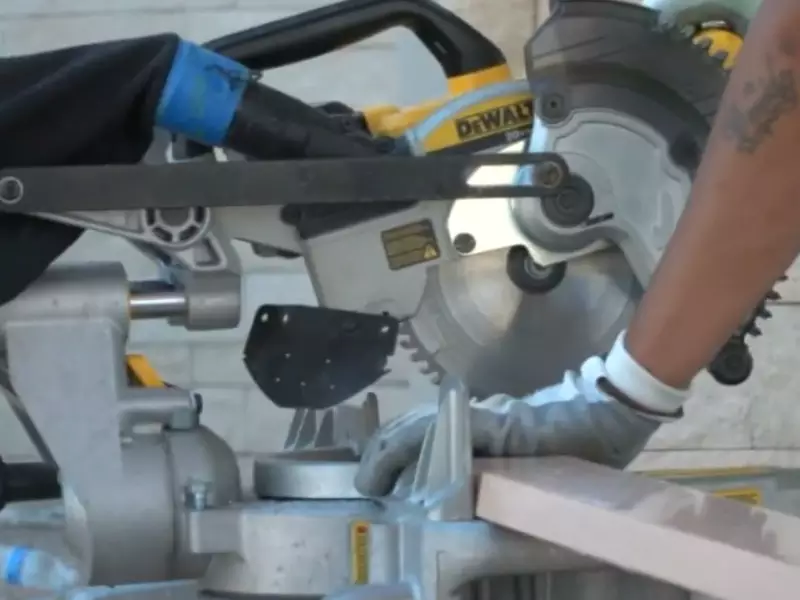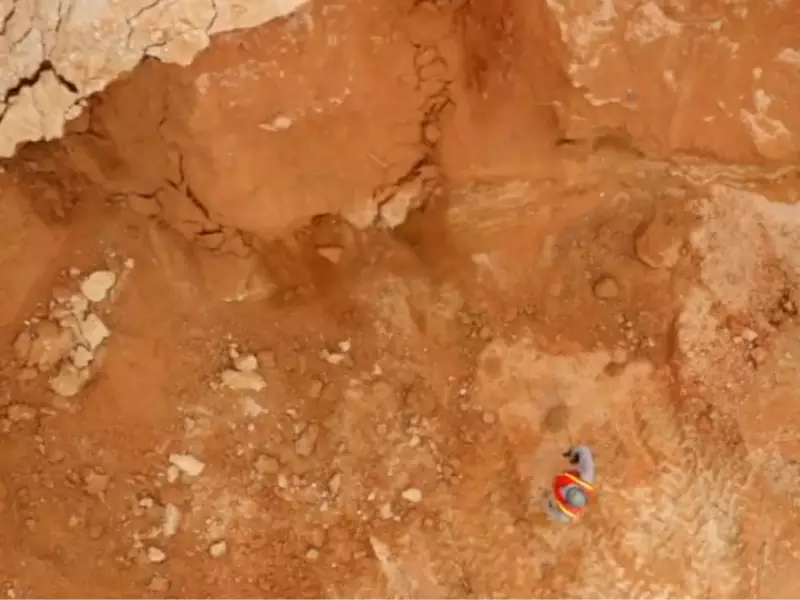Excavation projects are fundamental to construction, infrastructure development, and numerous other sectors, yet they pose significant safety challenges. Among these, “caught in or between” hazards stand out due to their severe consequences. These incidents occur when individuals find themselves caught within or between objects, machinery, or excavation walls, leading to critical injuries or fatalities.
“Caught in or between” hazards in excavations are primarily associated with the collapse of excavation walls, entanglement in machinery, and being caught between moving and stationary objects. These risks result from inadequate safety measures, failure to recognize hazardous conditions, and improper use or malfunction of equipment.
The severity of these hazards underscores the necessity for stringent safety protocols, comprehensive training, and a proactive approach to risk management. By recognizing the potential dangers and implementing effective safety measures, it is possible to significantly reduce the likelihood of “caught in or between” incidents, ensuring the safety of workers involved in excavation projects.

Excavation Basics
Definition and Types
Excavation involves the removal of soil, rock, or other materials from a site to form a hole, cavity, or open face. It’s a critical process in construction for foundations, reservoirs, and infrastructure development like roads and bridges. Excavations fall into two main categories: cut and fill. “Cut” or “cutting” involves removing material to lower the ground level, while “fill” involves adding material to raise the ground level. Beyond these, excavations are also classified based on their purpose:
- Trenches: Narrow and deep excavations, typically for laying pipes or cables.
- Shafts: Vertical or steeply inclined excavations, often for mining or elevators.
- Borrow pits: Used for extracting fill material.
- Footings: Excavations for building foundations.
Common Excavation Activities
Excavation activities are diverse, covering:
- Site preparation: Clearing land and marking out areas for excavation.
- Digging: The physical act of excavation using tools and machinery.
- Material handling: Moving excavated material for disposal or use elsewhere.
- Grading: Leveling and shaping the ground post-excavation for construction readiness.
Recognizing Hazards
Types of “Caught in or Between” Hazards
In excavation work, “caught in or between” hazards can manifest in several ways:
- Cave-ins: Where workers are trapped under collapsed soil or rock.
- Equipment entanglement: Getting caught in or compressed by machinery.
- Material collapse: Being buried or trapped by unstable stacks of materials.
Risk Factors in Excavation Sites
The risk of encountering these hazards increases due to:
- Unstable soil: Loose or waterlogged soil can collapse unexpectedly.
- Vibrations: Heavy machinery or traffic nearby can destabilize excavation walls.
- Improper shoring: Inadequate or absent support systems increase collapse risks.
- Lack of awareness: Workers unaware of potential hazards may inadvertently enter dangerous areas.
Case Studies
Historical Accidents
The industry has seen numerous accidents that serve as stark reminders of the risks associated with excavation work. For example, the 1989 incident where a worker was trapped in a collapsed trench in Boston, leading to fatal injuries. Such tragedies highlight the critical need for stringent safety measures.
Lessons Learned
From these accidents, key lessons include:
- The importance of pre-excavation assessments: Identifying soil type and stability can guide appropriate safety measures.
- Regular monitoring: Continuous observation for signs of potential cave-ins or equipment failure is vital.
- Emergency preparedness: Having a rescue plan and the necessary equipment can save lives in case of an accident.
Safety Measures
Pre-excavation Planning
Effective planning is the first step towards a safe excavation site. This involves:
- Site assessment: Evaluating soil conditions, proximity to structures, and identifying underground utilities.
- Safety plan: Developing a comprehensive safety strategy, including emergency response procedures.
Protective Systems for Trenches
To safeguard workers from cave-ins and other hazards, various protective systems are employed:
- Shoring: Installing supports to stabilize trench walls.
- Shielding: Using trench boxes to protect workers within the trench.
- Sloping and benching: Cutting trench walls at an angle to reduce the risk of collapse.

Equipment Safety
Machinery Use in Excavations
Machinery such as excavators, backhoes, and bulldozers play a pivotal role in excavation projects. They speed up work and handle tasks that would be impossible for humans alone. However, their size, power, and complexity introduce significant hazards, especially when operators are untrained or machinery is misused.
Preventive Maintenance and Inspections
To mitigate risks associated with heavy machinery, regular preventive maintenance and inspections are crucial. This includes checking for:
- Hydraulic systems integrity
- Operational efficiency of safety devices
- Wear and tear on critical components
A well-maintained machine is less likely to malfunction, reducing the risk of accidents. Inspection records should be kept meticulously to track equipment health over time.
Training and Awareness
Importance of Safety Training
Safety training is not just a regulatory requirement; it’s a lifesaver. Training programs should cover:
- Operation and maintenance of machinery
- Recognition of excavation hazards
- Use of protective systems
- Emergency response procedures
Effective training ensures every team member knows how to act safely and respond to emergencies, significantly reducing the likelihood of accidents.
Creating a Safety Culture
A safety culture goes beyond individual training sessions. It’s about creating an environment where safety is the highest priority for everyone, from the top management to the newest employee. Key elements include:
- Open communication about safety concerns
- Regular safety meetings
- Encouragement for reporting unsafe conditions
- Recognition of safe behaviors
A strong safety culture makes everyone a safety ambassador, actively contributing to a safer workplace.
Legal and Regulatory Framework
OSHA Standards for Excavations
The Occupational Safety and Health Administration (OSHA) sets and enforces standards to protect workers from excavation hazards. Key standards include:
- Requirements for protective systems
- Soil classification
- Safe access and egress for trenches deeper than 4 feet
- Inspection by a competent person
Adherence to OSHA standards is not just about compliance; it’s about ensuring a safe working environment for every worker.
Penalties for Non-Compliance
Non-compliance with OSHA standards can result in significant penalties, including fines and, in severe cases, legal action. Beyond the financial impact, non-compliance can lead to work stoppages and reputational damage, affecting a company’s ability to secure future projects.
Best Practices
Engineering Controls
Engineering controls are designed to eliminate or reduce hazards through the use of technology or changes in design. Examples in excavation work include:
- Using trench boxes to prevent soil collapse
- Hydraulic shoring systems for temporary support
- Sloping or benching the sides of excavations
These controls are often the most effective way to mitigate risks.
Administrative Controls
Administrative controls involve changing how people work to reduce risks. This can include:
- Job rotation to limit exposure to hazards
- Scheduling work to avoid times of high risk (e.g., after heavy rain)
- Implementing a buddy system to ensure workers look out for each other
Emergency Response
Planning for Emergencies
Emergency planning is a critical component of excavation safety. Plans should be site-specific and include:
- Identification of potential emergencies
- Assignment of roles and responsibilities
- Location and use of emergency equipment
- Communication protocols
Training exercises and drills should be conducted regularly to ensure readiness.
Rescue Operations
In the event of an accident, such as a cave-in or equipment failure, a well-coordinated rescue operation can be the difference between life and death. Key aspects include:
- Immediate notification of emergency services
- Safe and efficient retrieval of trapped or injured workers
- Providing first aid until professional medical help arrives
Rescue operations require specific training and equipment, underscoring the importance of preparedness in every excavation project.
Frequently Asked Questions
What are “caught in or between” hazards?
“Caught in or between” hazards refer to workplace accidents where a person is squeezed, caught, crushed, pinched, or compressed between two or more objects, or between parts of an object. This can happen in excavations when walls collapse, equipment fails, or when workers are caught between moving equipment and stationary structures.
How can “caught in or between” hazards be prevented?
Preventing these hazards requires thorough planning, use of protective systems like trench boxes and shoring, regular safety training for workers, equipment maintenance, and adherence to safety regulations. Identifying potential risks and implementing controls before work begins is crucial for prevention.
What role does OSHA play in excavation safety?
OSHA (Occupational Safety and Health Administration) sets and enforces safety standards for excavation work to protect workers from hazards. This includes regulations on trenching, protective systems, equipment safety, and training. OSHA’s guidelines help minimize risks and ensure a safer working environment for excavation projects.
Why is emergency response planning important in excavation projects?
Emergency response planning is vital as it prepares teams to act swiftly and efficiently in case of an accident, such as a trench collapse. It involves having a rescue plan, necessary equipment on site, and trained personnel ready to respond, which can significantly reduce the severity of injuries and save lives.
Conclusion
Excavation projects, while essential, carry inherent risks that demand attention and diligence from all parties involved. The prevalence of “caught in or between” hazards calls for a culture of safety that transcends basic compliance with regulations. By fostering awareness, promoting rigorous training, and implementing robust safety measures, the industry can protect its workforce from these severe risks.
The commitment to safety is a continuous journey that requires the engagement of every stakeholder in the excavation process. As technologies and methodologies evolve, so too must our approaches to safeguarding the lives of those who build our world. This commitment not only ensures compliance with regulatory standards but also, and more importantly, honors the value of human life by making safety a paramount concern.
